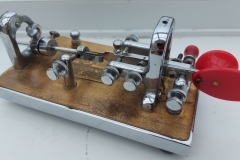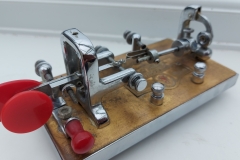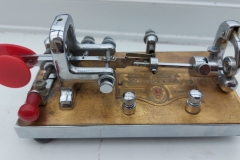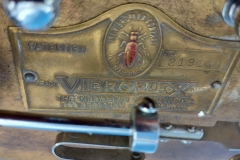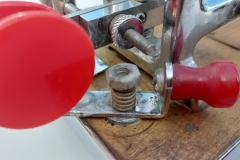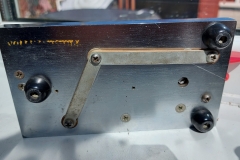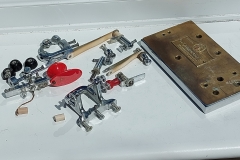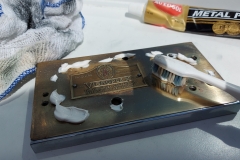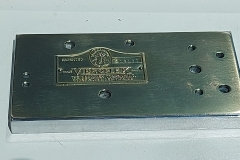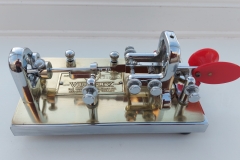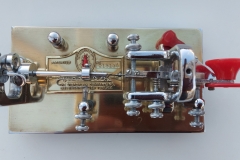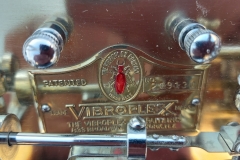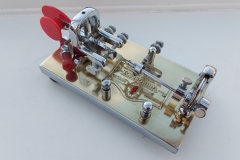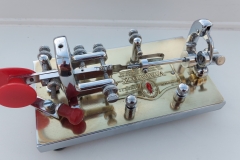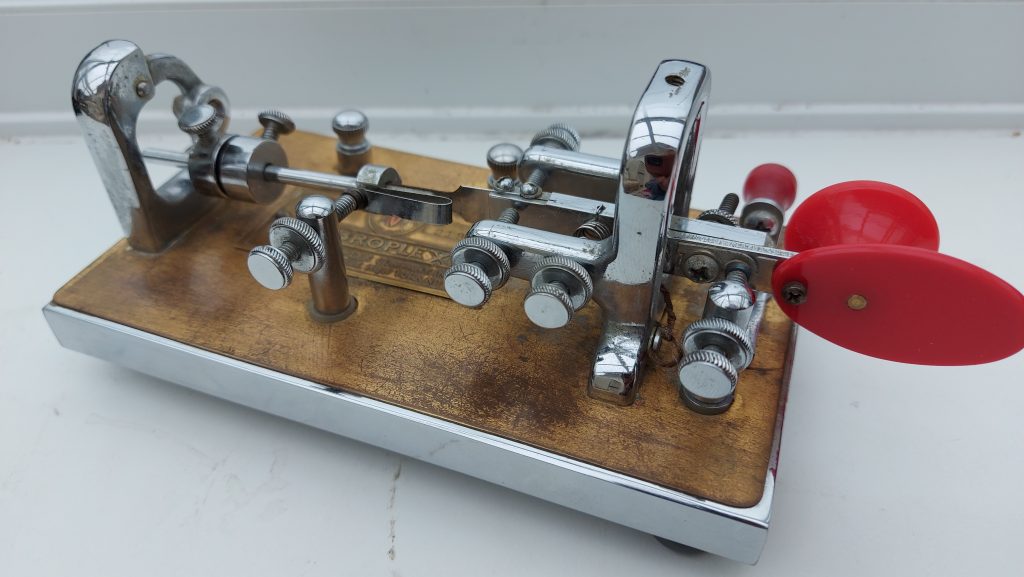
I recently spotted this Vibraplex for sale at a more than reasonable price I just couldn’t resist buying it. I have been learning Morse for a few months using a Kent straight key and had said that I was not interested in using anything other than a straight key but this one just intrigued me to the point that I just had to have it!
To look at, the Vibraplex is an amazing piece of engineering. It sits upon a heavy chrome base with a gold top plate and oodles of chrome on the key itself. There are screws and springs and weights and all manner of bits and bobs to twiddle with and adjust which at first glance to a newcomer does look somewhat complex. On the top plate of the key there is a manufacturers plate mounted giving the manufacturers name “Vibraplex”, and a serial number “219130” which according to http://www.vibroplexcollector.net/wp-content/uploads/2013/03/WW7P-Serial-Number-List.pdf dates the key to approximately 1961!
I noted that all of the screws on the key were all tightened up, I presume this was to stop things moving about while the key was in storage! So how to setup and adjust the thing, with so many screws on it where do you start? Google and YouTube to the rescue, there are many pages and videos on the web that cover the topic of setting this key up, the ones that I found most helpful are https://www.youtube.com/watch?v=qekmyx31Uxw and https://www.electronics-notes.com/articles/ham_radio/morse_code/use-setup-vibroplex-bug-mechanical-key.php
Having adjusted and setup the key it was time to try it…. erm, yes ok…. it certainly is nothing like a straight key to use and at first I struggled to key any morse that made any sense at all! But with a little practice and then attempting to use it online with my good friends Gerry and Ross on CWCOM (Gerry by the way has an excellent blog all about CWCOM at https://morsepower.blogspot.com/) I started to get something like morse code out of the key!
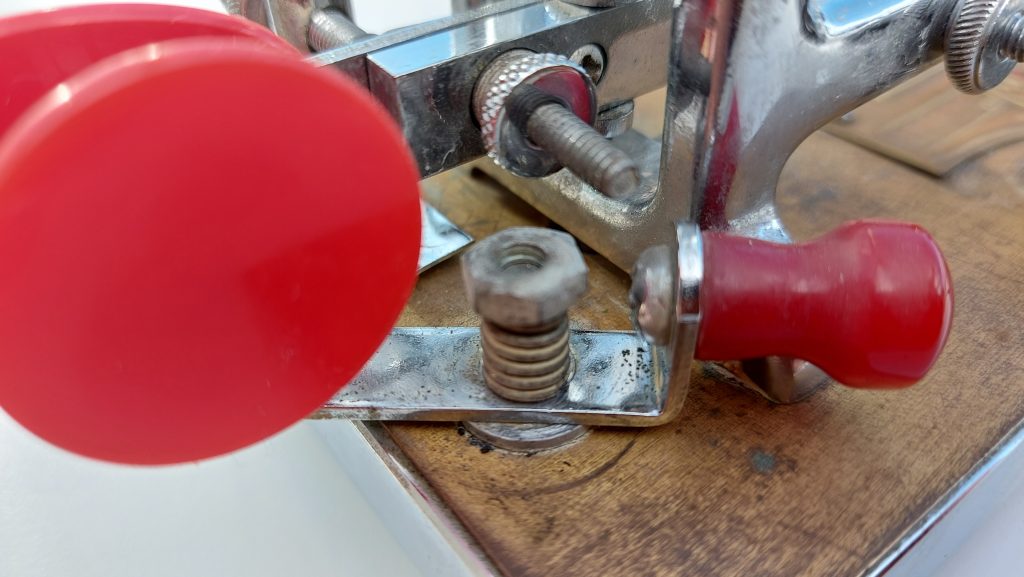
However the more I looked at the key, the more I felt that this amazing piece of engineering deserved a little tlc so I decided to strip it down and clean it up. On the whole the key seemed to be in good shape, however there were some really horrid bits too like a rusty nut and bolt holding the tuning lever and the gold base plate which was in very poor condition.
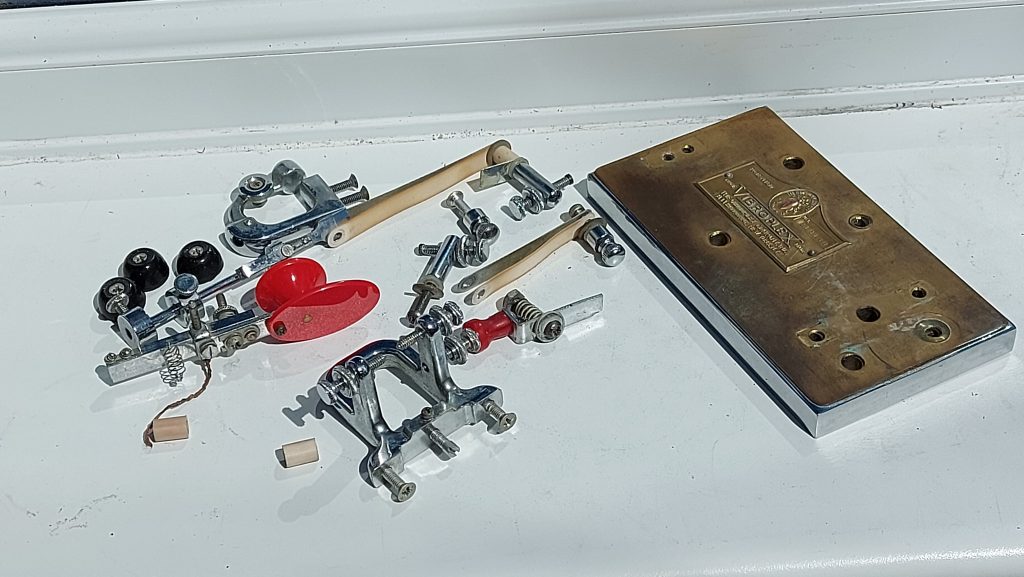
It didn’t take long to strip the key down into a pile of bits which were promptly bathed in a bath of Bicarbonate of Soda and then polished with Silver cleaner. The base plate however was a very different problem. This is the “presentation” model which features a gold-plated brass top plate, however it appeared the plate appeared to be very heavily scratched and pitted and was in very poor condition.
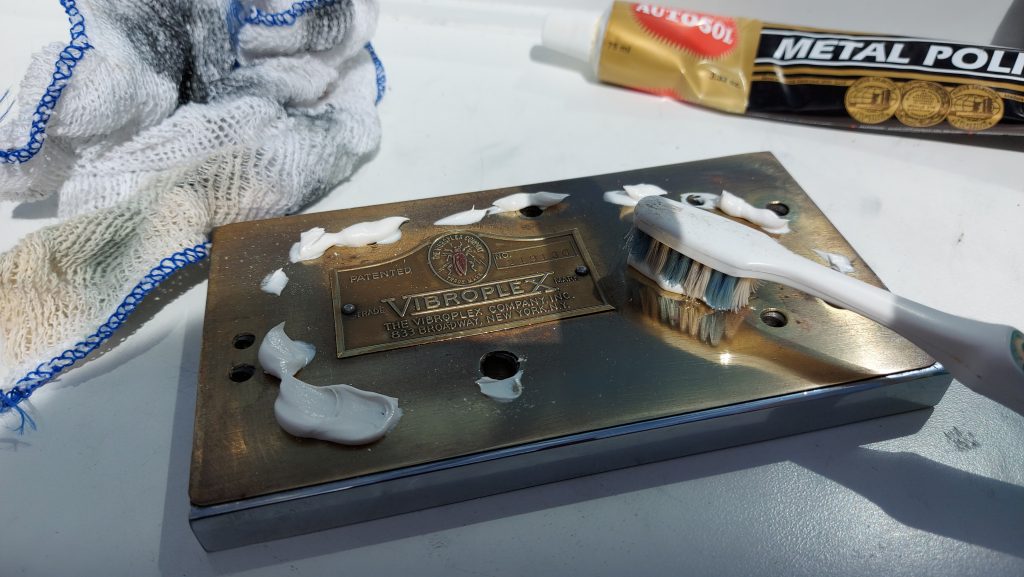
I thought that it would require re-plating but when I started to polish it using Brasso it appeared to show some signs that it might just clean up. However although the Brasso just wasn’t doing the job very well, so I decided to try Autosol and a soft toothbrush instead and with a few hours work the results were amazing. The plate was not in bad condition after all, the gold plate had simply been tarnished over many years with grease, dust, tobbacco smoke etc which in turn had been scratched leaving the plate looking the way that it did. Once the Autosol had done it’s magic the original gold plating shone through in all its former glory.
Once all of the parts were fully cleaned and re-assembled / adjusted the key looks simply amazing. All I need to do now is learn how to use the Vibroplex key!

